On April 24…
“I can retire to private life with the consciousness that I shall receive from posterity the credit of having been elected to the highest position in the gift of the people, without any of the cares and responsibilities of the office.”
~Samuel J. Tilden
Defeated Presidential Candidate
Who Really Wasn’t Defeated At All
==================

==================
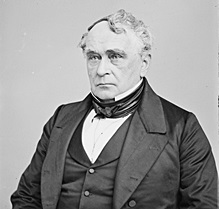
1863 – The Union army issued General Orders No. 100, which provided a code of conduct for Federal soldiers and officers when dealing with Confederate prisoners and civilians.
The orders were the brainchild of Francis Lieber, a Prussian immigrant whose three sons had served during the Civil War. One son was mortally wounded while fighting for the Confederacy at the Battle of Williamsburg, Virginia, in 1862. Lieber’s other two sons fought for the Union.
General Henry Halleck, general-in-chief of the Union armies, appointed a committee of four generals and Lieber to draft rules of combat for the Civil War. The final document consisted of 157 articles written almost entirely by Lieber.
The orders established policies for, among other things, the treatment of prisoners, exchanges, and flags of truce.
There was no document like it in the world at the time, and it became the standard for international military law,
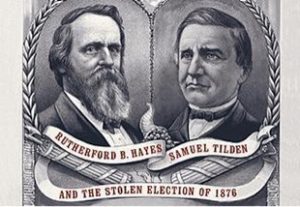
1877 – Federal troops were ordered out of New Orleans, ending the North’s post-Civil War rule in the South. The action came as a result of the Compromise of 1877 which handed the 1876 presidential election to Rutherford B. Hayes.
The Background…The results of the election remain among the most controversial ever, although it is not disputed that Samuel Tilden (D-NY) outpolled Hayes (R-OH) in the popular vote.
After a first count of votes, Tilden won 184 electoral votes to 165 for Hayes, with 20 votes from four states (Louisiana, Florida, S. Carolina and Oregon) unresolved. 185 electoral votes were necessary to claim victory.
Facing an unprecedented constitutional crisis, the Congress of the United States passed a law on January 29, 1877 that formed a 15-member Electoral Commission to settle the result.
After a series of 8–7 votes, the commission gave all 20 disputed electoral votes to Hayes, giving Hayes a 185–184 electoral vote victory.
Democratic leaders agreed with reluctance to accept Hayes as president in return for the withdrawal of Federal troops from the last two still-occupied Southern states, South Carolina and Louisiana.
Once the parties had agreed to these terms, the Hayes’ electors were selected and he was named president two days before the inauguration.
To the four million former slaves in the South, the Compromise of 1877 was the “Great Betrayal”. Republican efforts to assure civil rights for the blacks were totally abandoned. The white population of the country was anxious to get on with making money.
No serious move to restore the rights of black citizens would surface again until the 1950s.

1908 – A single tornado traveled 150 miles through Louisiana and Mississippi, leaving 143 dead in its wake.
Tornadoes on average travel four to eight miles along the ground at about 60 miles per hour. This one traveled more than 150 miles.
Two of the locations worst hit by the single extraordinary tornado were Amite, Louisiana, and Purvis, Mississippi. In Amite, the tornado was 2.5 miles wide as it touched the ground, killing 29 residents.
In Purvis, 55 people were killed and 400 were injured.
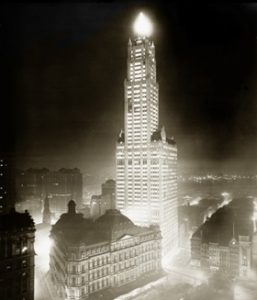
1913 – With lights turned on by way of a button in Washington, D.C., President Woodrow Wilson officially opened the Woolworth Building in New York City.
With a height of 792 feet and 60 stories tall, it was, at the time, the tallest in the world, and would remain so until 1930.

1945 – President Harry Truman learned the full details of the Manhattan Project, in which scientists were attempting to create the first atomic bomb.
America’s secret development of the atomic bomb began in 1939 with then-President Franklin Roosevelt’s support. The project was so secret that FDR did not even inform his fourth-term vice president, Truman, that it existed.
In fact, when Truman’s 1943 senatorial investigations into war-production expenditures led him to ask questions about a suspicious plant in Minneapolis, which was secretly connected with the Manhattan Project, he received a stern phone call from FDR’s secretary of war, Harry Stimson, warning him not to inquire further.
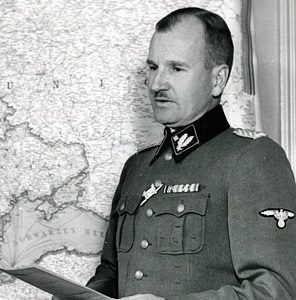
1945 – Ernst-Robert Grawitz, the head of the German Red Cross, died.
But don’t let the Red Cross affiliation fool you. The man was a monster.
After assuming control of the German Red Cross in 1937, he introduced Nazi ideology to staff members and would turn up to International Red Cross meetings in his SS uniform.
Grawitz later advised Heinrich Himmler on the use of gas chambers and carried out brutal medical experiments on Nazi concentration camp prisoners.
Near the end of the war, Grawitz became a physician in the Fuhrerbunker. When he heard that other officials were leaving Berlin in order to escape the advancing Soviet Red Army, Grawitz petitioned Hitler to allow him to leave Berlin.
His request was denied.
Grawitz decided to commit suicide, an act that also killed his family. While eating dinner with his wife and two children, he pulled the pins out of two grenades that he held under the table.
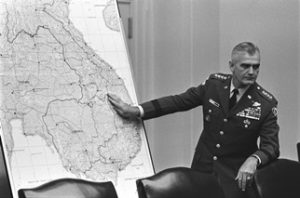
1967 – At a news conference in Washington, Gen. William Westmoreland, senior U.S. commander in South Vietnam, caused controversy by saying that the enemy had “gained support in the United States that gives him hope that he can win politically that which he cannot win militarily.”
Although he said “Ninety-five percent of the people were behind the United States effort in Vietnam,” he asserted that the American soldiers in Vietnam were “dismayed, and so am I, by recent unpatriotic acts at home.”
This criticism of the antiwar movement was not received well by many in and out of the antiwar movement, who believed it was both their right and responsibility to speak out against the war.
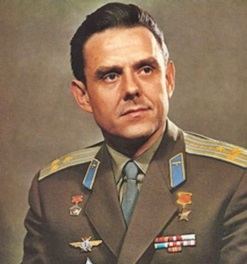
1967 – The Soviet Union announced the catastrophic failure of its latest space mission, with the crash of Soyuz 1 and the death of the cosmonaut on board.
Colonel Vladimir Komarov was killed when the spacecraft crashed during its return to Earth due to a parachute failure.
Prior to launch, Soyuz 1 engineers reported 203 design faults to party leaders, but their concerns “were overruled by political pressures.”
Problems began shortly after launch when one solar panel failed to unfold, leading to a shortage of power for the spacecraft’s systems. Further problems with the orientation detectors complicated maneuvering the craft. By orbit 13, the automatic stabilization system was completely dead, and the manual system was only partially effective.
After 18 orbits, Soyuz 1 fired its retro rockets and reentered the Earth’s atmosphere. To slow the descent, first a drogue parachute was deployed, followed by the main parachute. However, due to a defect, the main parachute did not unfold.
Komarov then activated the manually deployed reserve chute, but it became tangled with the drogue chute, which did not release as intended.
As a result, the Soyuz 1 descent module fell to Earth in a 400 mph free fall. The impact completely flattened the 7-foot tall descent module, causing the solid fuel rockets at the base of the Soyuz to explode, leaving only molten wreckage.

1968 – Herb Alpert released This Guy’s In Love With You.
The single reached #1 on the Billboard Hot 100 pop singles chart in June, and remained in the top position for four weeks.
Video Factoid: Filmed around the hills of Santa Monica for a CBS special titled Beat of The Brass, it was an idyllic portrait of young romance featuring Alpert and his first wife, Sharon Mae, who sported bangs, a diffident smile, and a truly impressive amount of mascara.
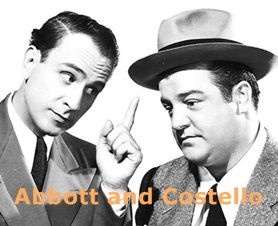
1974 – Actor/comedian Bud Abbott, the straight man of the comedy team of Abbott and Costello, died of cancer at the age of 76.
Abbott and Costello are among the few non-baseball personnel to be memorialized in the Baseball Hall of Fame in Cooperstown, NY.
A plaque and a gold record of their legendary “Who’s On First?” sketch have been on permanent display there since 1956, and the routine runs on an endless video loop in the exhibit area.

1975 – Pete Ham died of suicide by hanging. He was 27.
He was best known as a lead singer/guitarist/songwriter in the 1970s rock band Badfinger, whose hit songs included No Matter What, Day After Day and Baby Blue.
Ham also co-wrote the ballad Without You, a worldwide #1 hit for Harry Nilsson that has become a standard covered by hundreds of artists.
In 1972, Stan Polley, the band’s manager, negotiated a record contract with Warner Bros. Records for Badfinger, which called for a $225,000 advance to be paid into an escrow account. In 1974, Warner’s publishing division filed a lawsuit against Polley when it was unsuccessful in locating the funds.
The legal situation crippled Badfinger financially and after Polley disappeared, the band was left penniless, despite having sold over 14 million albums.
Ham left a note telling his pregnant wife and son that he loved them. It read, “I will not be allowed to love and trust everybody. This is better. Pete. … PS Stan Polley is a soulless bastard. I will take him with me.”
This unreleased demo, recorded by Ham shortly before his death, is incredibly painful, knowing where it’s coming from. It’s a slap at Polley wrapped inside a suicide note.
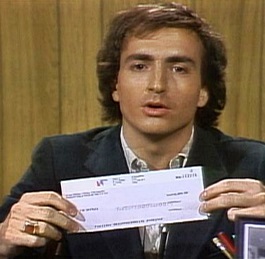
1976 – In a gag mocking the full-page ads taken out in the New York Times offering the Beatles millions of dollars to reunite and play in Shea Stadium, Saturday Night Live producer Lorne Michaels went on air and offered the Beatles the sum of $3,000 if they would agree to reunite on the show.
Paul and Linda McCartney were spending the evening with John Lennon and Yoko Ono and watching the show at Lennon’s home in the Dakota Building in New York City.
Lennon and McCartney thought the offer was hilarious and thought about taking a cab to the show, but decided they were too tired.

1980 – An ill-fated military operation to rescue American hostages held in Tehran ended with eight U.S. servicemen dead and no hostages rescued.
With the Iran Hostage Crisis stretching into its sixth month and all diplomatic appeals to the Iranian government ending in failure, President Jimmy Carter ordered the military mission (Operation Eagle Claw) as a last ditch attempt to save the hostages.
During the operation, three of eight helicopters failed, crippling the crucial airborne plans. The mission was then canceled at the staging area in Iran, but during the withdrawal one of the retreating helicopters collided with one of six C-130 transport planes, killing eight soldiers and injuring five.
The next day, a somber Jimmy Carter gave a press conference in which he took full responsibility for the tragedy.
The hostages were not released for another 270 days.

1989 – Tom Petty released his Full Moon Fever album.
It was his first solo album, although it included contributions from members of his backing band the Heartbreakers, notably Mike Campbell, Howie Epstein and Benmont Tench.
Other musicians on the album included Jeff Lynne, George Harrison and Roy Orbison (who died prior to its release.)
The album became a commercial and critical success peaking at #3 on the Billboard Albums chart,
It included three songs that became hit singles; I Won’t Back Down (#12), Running Down A Dream (#23), and Free Fallin’ (#7)
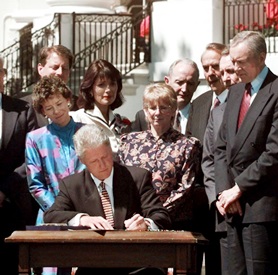
1996 – The Antiterrorism and Effective Death Penalty Act of 1996 was signed into law by President Bill Clinton.
The bill was introduced by Senate Majority Leader Bob Dole and passed with broad bipartisan support by Congress (91-8 in the Senate, 293-133 in the House of Representatives) following the 1993 World Trade Center bombing and the 1995 Oklahoma City bombing.
The act contains a number of provisions to “deter terrorism, provide justice for victims, provide for an effective death penalty, and for other purposes,” in the words of the bill summary.
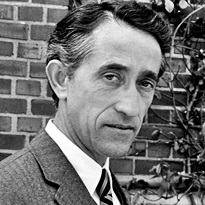
1997 – Comedian Pat Paulsen died of pneumonia and kidney failure. He was 69.
He was a regular cast member on The Smothers Brothers Comedy Hour, but perhaps is best remembered for his numerous tongue-in-cheek campaigns for President of the United States.

2013 – A building collapse near Dhaka, Bangladesh, killed 1,134 people and injured 2,500 others.
The Rana Plaza, an eight-story commercial building, housed six different garment factories on the top four floors – and every one of those top four floors had been built without a permit.
Compounding the problem was the fact the pillars of the illegal structure contained only nine thin iron rods each.
It is considered the deadliest structural failure accident in modern human history and the deadliest garment-factory disaster in history.
One day before the collapse, a TV station recorded footage that showed cracks in the Rana Plaza building. Immediately afterward, the building was evacuated, and the shopping plaza and a bank on the lower floors were closed.
Later in the day, the building was proclaimed to be safe and workers were told they should return to work the next day. Managers at Ether Tex, one of the garment makers, threatened to withhold a month’s pay from workers who refused to come to work.
Obscene Factoid: At the time of the collapse, the garment workers were being paid 38 euros a month, equivalent to $42 a month. A month!
I am more than happy to name the bloodsucking brands that employed them: Benetton,Bonmarché, Prada, Gucci, Versace, Moncler, The Children’s Place, El Corte Inglés, Joe Fresh, Mango, Matalan,and Primark,
Compiled by Ray Lemire ©2020 RayLemire.com / Streamingoldies.com. All Rights Reserved.